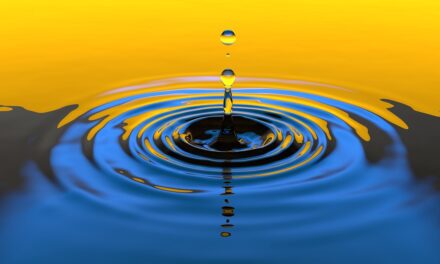Techniques to improve water cycle efficiency in Salt Lake City: The state capital and largest city in Utah.
Causes of Water Shortages, etc
The Shrinking Great Salt Lake: A Domino Effect of Environmental Crisis
The Great Salt Lake, a vital ecosystem in the heart of the Great Basin, is facing a dire crisis: it is shrinking at an alarming rate. This shrinking lake is not an isolated problem; it’s a domino effect with cascading consequences for the environment, wildlife, and human communities.
The Ripple Effects:
- Wildlife Habitat Loss: The Great Salt Lake is a critical habitat for countless species, including millions of migratory birds, fish, and brine shrimp. As the lake shrinks, its shallow waters become increasingly salty, making it difficult for these animals to survive. The loss of this vital habitat threatens the delicate balance of the entire ecosystem.
- Dust Storms and Air Quality: The shrinking lake exposes vast expanses of dry lakebed, which are easily picked up by wind, creating massive dust storms. These dust storms not only degrade air quality, but also carry harmful pollutants, impacting human health and agriculture.
- Economic Impact: The Great Salt Lake is crucial to the economy of Utah, supporting industries like tourism, fishing, and recreation. As the lake continues to shrink, these industries face significant threats, leading to job losses and economic instability.
The Culprits:
- Climate Change: Increased temperatures and changing precipitation patterns are contributing to a drier climate, leading to less water flowing into the lake.
- Water Consumption: Growing populations and increased agricultural demands are putting immense pressure on water resources, diverting water away from the lake.
- Inefficient Water Use: Leaky pipes, inefficient irrigation systems, and wasteful practices contribute to the overall water shortage.
A Call to Action:
Organizations like the Active Climate Rescue Initiative are working tirelessly to address the water shortage crisis in the Great Basin. They are actively exploring innovative solutions, promoting water conservation practices, and advocating for policies that prioritize water sustainability.
What You Can Do:
- Educate Yourself: Understand the water cycle and the importance of the Great Salt Lake.
- Conserve Water: Practice water-saving techniques at home and encourage others to do the same.
- Support Organizations: Donate to or volunteer with organizations working to protect the Great Salt Lake and conserve water resources.
The future of the Great Salt Lake, and the health of the entire Great Basin, hangs in the balance. It’s time to act now and ensure that this vital ecosystem thrives for generations to come.
The Great Salt Lake: A Thirsty Story
TL;DR: The Great Salt Lake is shrinking due to less rain, more people using the water, and climate change. This is bad for wildlife, the air, and the economy. We need to use less water, make water go further, and think about how we use water as a society to help the lake and ourselves.
The Water’s Journey
The Great Salt Lake is a big, salty lake in Utah. Water flows into the lake from rivers, streams, and rain. The lake gets its salt from the surrounding mountains and soil. Think of it like a giant bathtub that’s always being filled with water, but with extra salt!
The water cycle is a bit like a big game of tag, where water goes from the sky to the ground, then back up again! It’s always moving, but sometimes it gets stuck in the lake.
The Shrinking Lake: What’s Happening?
For a while now, the lake has been shrinking. This is a problem because the lake is important for the environment and the economy.
Here are some of the reasons why:
- Less Rain: We haven’t had as much rain in recent years, so there’s less water flowing into the lake.
- More People: More people are using water for drinking, farming, and other things. This means there’s less water left for the lake.
- Climate Change: Global warming is causing changes in weather patterns, making it even drier in the area. This is making the problem of less rain worse.
The Effects of the Shrinking Lake
A shrinking lake is like a domino effect, with problems rippling out:
- Wildlife: The Great Salt Lake is home to many animals, like birds, fish, and brine shrimp. These animals need the lake to survive, and they’re struggling as it shrinks.
- Air Quality: The dust from the dry lakebed can blow into the air, making it harder to breathe for people with asthma and other health problems.
- Economy: The lake supports jobs in fishing, tourism, and salt production. If the lake goes away, these jobs will be lost.
How Can We Help the Lake?
There are many things we can do to help the Great Salt Lake. Here are some ideas:
- Use Less Water: We can all do our part by taking shorter showers, fixing leaky faucets, and watering our lawns less often.
- Smarter Irrigation: Farmers can use new watering techniques to use less water and still grow crops.
- Policy Changes: Governments can create rules to help save water, like charging more for water when it’s scarce.
Saving Our Water: An Urgent Need
The Great Salt Lake is an important part of our environment and our economy. The Active Climate Rescue Initiative is actively working to help address the water shortage crisis in the Great Basin, where the Great Salt Lake is located. They are focused on finding ways to use water more efficiently, protect water sources, and build resilience to climate change.
By working together, we can help make sure the Great Salt Lake stays healthy for years to come. It’s important to learn about the water cycle, conserve water, and support organizations like Active Climate Rescue to protect the Great Salt Lake and our future!
Summary
The Great Salt Lake is facing a serious water shortage, caused by a combination of factors including less rain, increased water use by humans, and climate change. This shrinking lake negatively impacts wildlife, air quality, and the local economy. To address this crisis, we need to implement water conservation measures, adopt innovative irrigation techniques, and encourage policy changes to promote water conservation and responsible water management. Organizations like the Active Climate Rescue Initiative are working to find solutions to the water shortage in the Great Basin, including the Great Salt Lake region. By working together, we can protect this valuable natural resource and ensure a healthy future for the Great Salt Lake and the communities it sustains.
More on Techniques to improve water cycle efficiency…
- ## Techniques to Improve Water Cycle Efficiency:
- Water cycle efficiency optimization
- Water conservation techniques
- Efficient water management strategies
- Sustainable water use practices
- Rainwater harvesting systems
- Greywater recycling methods
- Water reuse technologies
- Drip irrigation systems
- Water-efficient appliances
- Water-wise landscaping
- Reducing water evaporation
- Improving water infiltration
- Groundwater recharge techniques
- Managing water demand
- Water pricing strategies
- Urban water management
- Water infrastructure improvements
- Water pollution prevention
- Sustainable agriculture and water use
- Climate change and water cycle
- Water cycle modeling and analysis
- ## Causes of Water Shortages:
- Water scarcity causes
- Drought conditions
- Climate change and water shortages
- Population growth and water demand
- Overexploitation of groundwater
- Inefficient water use
- Water pollution
- Water infrastructure issues
- Water conflicts and management
- Climate variability and water availability
- Water security challenges
- Desalination and water supply
- Water management policies
- Water conservation awareness
- Sustainable water development
- Water resources management
- Global water crisis
- Water footprint analysis
- Water scarcity solutions
- Water stress and drought
- Water scarcity mapping
- Water scarcity indicators
- Water scarcity impact on ecosystems











